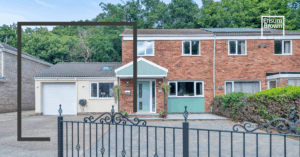A recent report has revealed that less than half (46%) of tenants have contents insurance, prompting an important question: is your rental property adequately protected with the right insurance? Here’s a straightforward guide to help landlords understand their insurance responsibilities and options when managing a buy-to-let property.
Who is responsible for insurance in a buy-to-let?
In a buy-to-let, the responsibility for insurance is divided between the landlord and the tenant. The guiding principle is insurable interest: you insure what you own and what you stand to lose if damage occurs. However, things can be less clear-cut when it comes to rental properties.
Buildings insurance: Your responsibility as the landlord
As the owner of the property, it is your responsibility to have landlord’s building insurance. This should protect your building against standard risks such as fire, storm damage, flooding, subsidence, theft, and vandalism. Make sure the level of cover reflects the full cost of rebuilding the property, not just its market value.
Contents insurance: The tenant’s responsibility
Anything owned by the tenant, such as furniture, electrical items, clothing or bicycles, is their responsibility to insure. Tenants should also consider accidental damage insurance and tenant liability insurance, which can cover them for damage they cause to your property or their own belongings.
While you cannot require tenants to have insurance, it is sensible to recommend it. Landlords are not responsible for replacing or repairing tenant-owned items, so encouraging tenants to protect themselves benefits everyone.
Other types of insurance landlords should consider
In addition to buildings cover, several other types of insurance for rental properties are worth considering:
- Landlord liability insurance: Covers you in case a tenant or visitor is injured due to a fault in the property, such as a broken step or loose flooring.
- Landlord contents insurance: If you provide furnishings, white goods, carpets or curtains, it’s wise to protect these items separately.
- Accidental or malicious damage cover: This protects you against damage caused by tenants, whether accidental or intentional.
- Home emergency cover: Provides help when essential services such as heating, plumbing or electricity fail.
- Rent guarantee insurance and legal expenses cover: These protect against missed payments, disputes and legal costs relating to evictions or other tenancy issues.
- Loss of rent and alternative accommodation cover: Useful if your property becomes uninhabitable and your tenant needs to move out temporarily.
Choosing the right buy-to-let insurance policy
Start by identifying what you need and want to cover. Are you offering a fully furnished property? Is it a multi-unit let or a single tenancy? Once you’ve clarified your needs, shop around and compare policies from various landlord insurance providers.
Ensure the sum insured is sufficient, and take time to understand the policy exclusions, conditions, and excess amounts. Not all policies are the same, so read the small print carefully to avoid surprises in the event of a claim.
Having the right insurance in place is essential for protecting your property, income and peace of mind. A well-chosen policy ensures you’re covered for the risks specific to letting and saves you from costly surprises down the line.
If you’d like advice on managing your rental or help finding tenants, we’d be happy to assist. Get in touch with our property management team today.
And if you found this blog helpful, feel free to share it with other landlords who might benefit from a better understanding of insurance in the rental market.
*Source: Insurance provider Paymentshield.
Important Links
Book a Lettings Valuation
Visit our Royston Facebook Page
Visit our Newmarket Facebook Page
View our Ware Facebook Page





